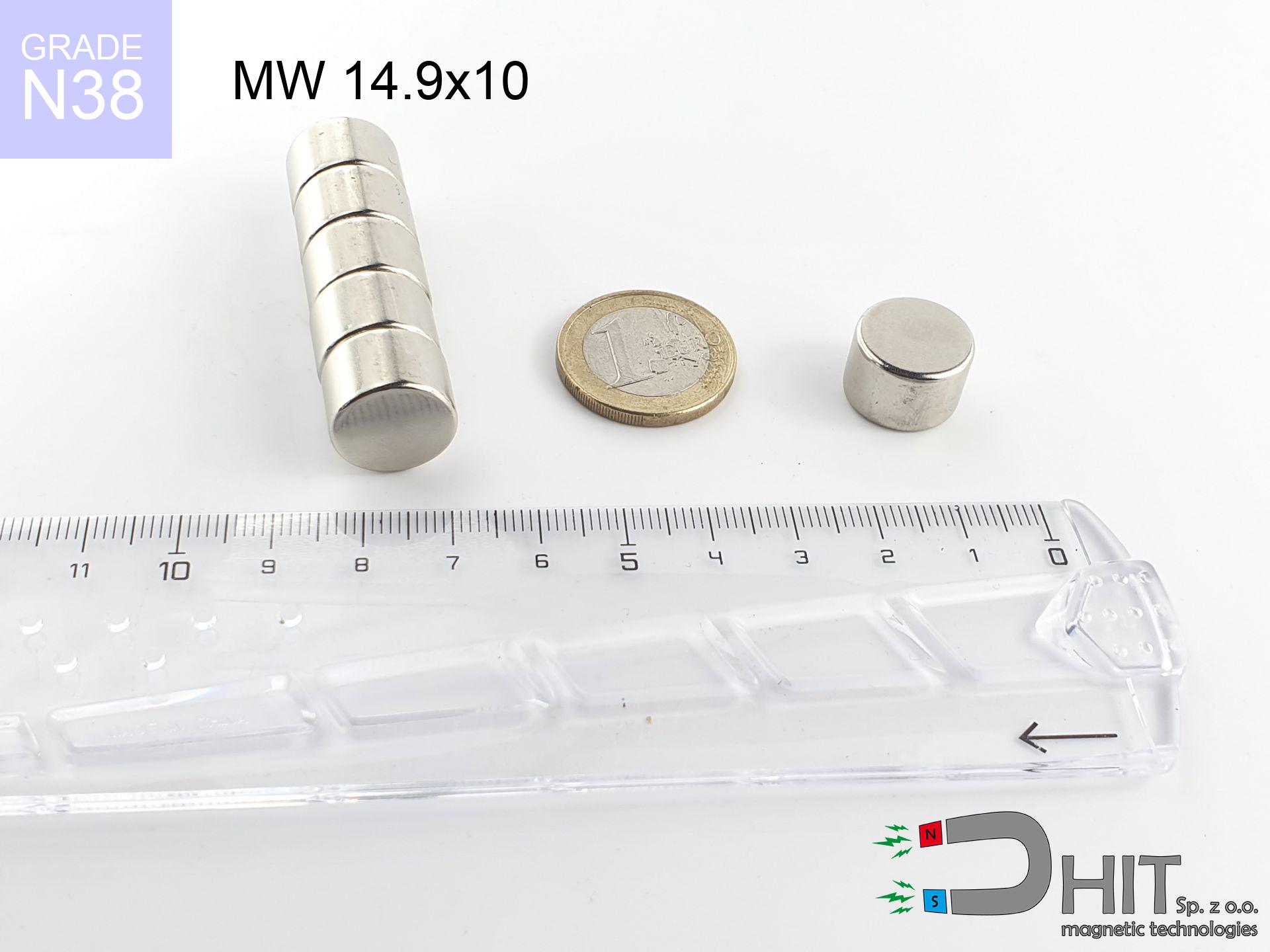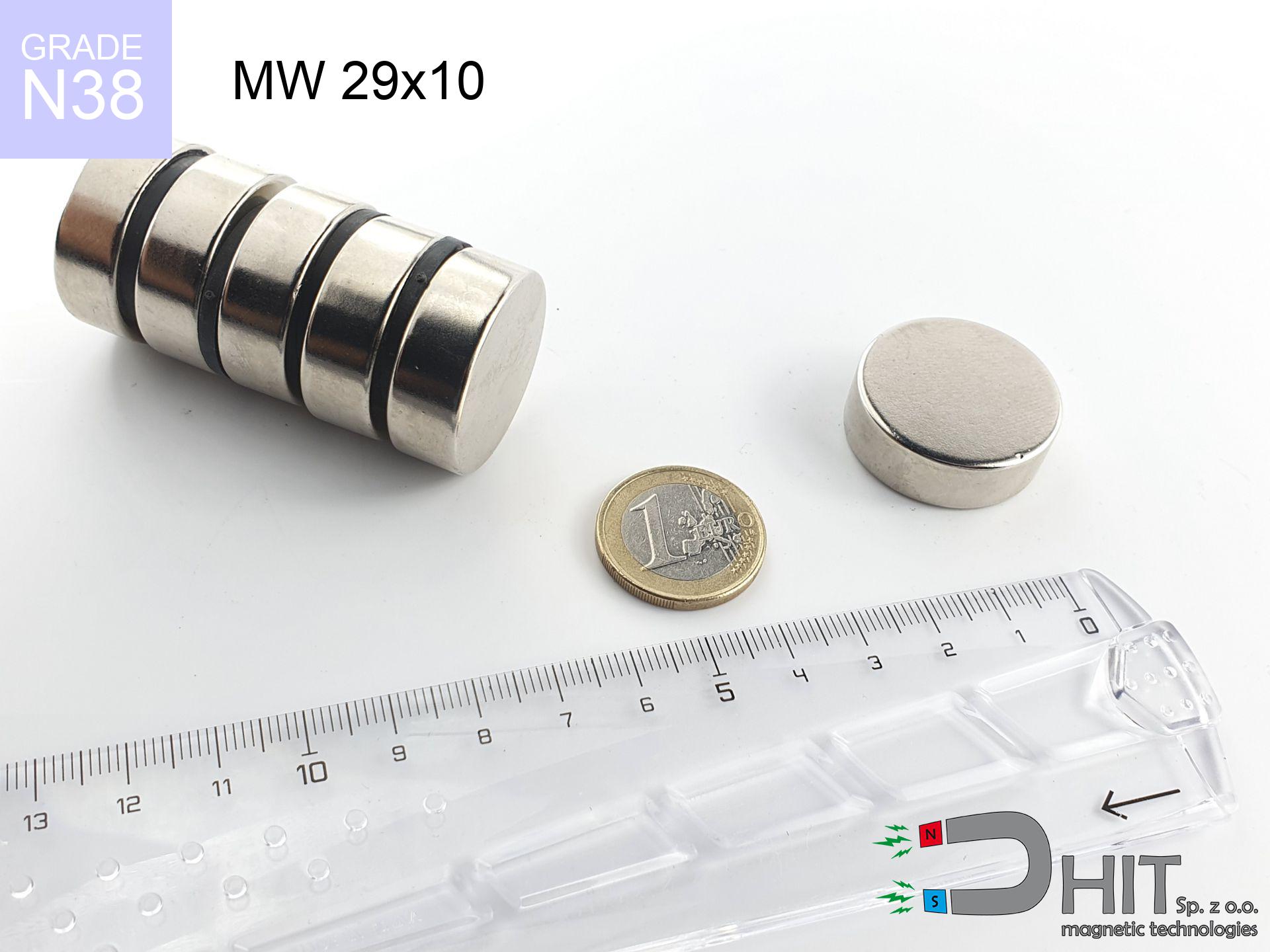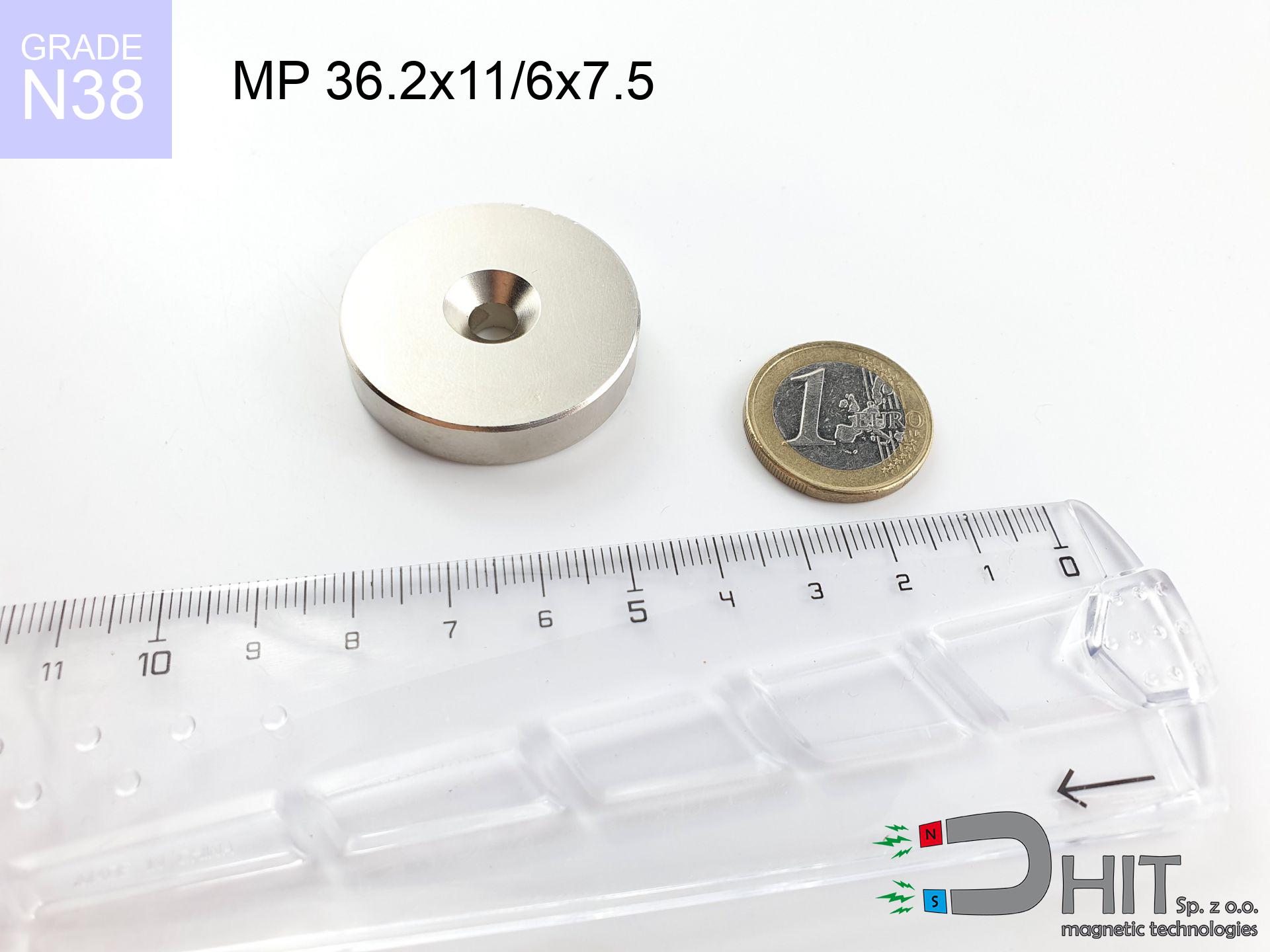SM 18x250 [2xM5] / N42 - magnetic roller
magnetic separator
catalog number 130275
GTIN: 5906301812777
diameter Ø
18
mm [±0,1 mm]
height
250
mm [±0,1 mm]
max. temperature
≤ 80
°C
catalog number 130275
GTIN: 5906301812777
diameter Ø
18 mm [±0,1 mm]
height
250 mm [±0,1 mm]
max. temperature
≤ 80 °C
553.50 ZŁ gross price (including VAT) / pcs +
450.00 ZŁ net price + 23% VAT / pcs
bulk discounts:
need more quantity?Do you have trouble in choosing?
Call us tel: +48 888 99 98 98 or get in touch through form on our website. You can check the mass as well as the shape of neodymium magnets in our magnetic mass calculator magnetic calculator
Orders placed by 2:00 PM will be shipped on the same business day.
Specification: magnetic separator 18x250 [2xM5] / N42
Magnetic properties of the material N42
Physical properties of sintered neodymium magnets Nd2Fe14B
Recommended articles for purchase
Advantages and disadvantages of neodymium magnets NdFeB.
Apart from immense strength, neodymium magnets have the following advantages:
- They do not lose their power (of the magnet). After approximately 10 years, their strength decreases by only ~1% (theoretically),
- They are highly resistant to demagnetization by external magnetic sources,
- In other words, thanks to the shiny coating of nickel, gold, or silver, the element acquires an aesthetic appearance,
- They have exceptionally high magnetic induction on the surface of the magnet,
- Thanks to their high temperature resistance, they can operate (depending on the form) even at temperatures up to 230°C and above...
- Thanks to the flexibility in shaping or the ability to adapt to specific requirements – neodymium magnets can be produced in a wide range of shapes and sizes, which enhances their versatility in applications.
- Significant importance in advanced technologically fields – find application in HDD drives, electric drive mechanisms, medical equipment or other advanced devices.
Disadvantages of neodymium magnets:
- They are fragile when subjected to a strong impact. If the magnets are exposed to impacts, we recommend using magnets in a steel housing. The steel housing in the form of a holder protects the magnet from impacts and at the same time increases its overall strength,
- They lose strength at high temperatures. Most neodymium magnets experience permanent loss of strength when heated above 80°C (depending on the form and height). However, we also offer special magnets with high temperature resistance, up to 230°C,
- Due to their susceptibility to corrosion in a humid environment, we recommend using waterproof magnets made of rubber, plastic, or other moisture-resistant materials when using them outdoors,
- The use of a cover or a magnetic holder is recommended due to the limited possibilities of manufacturing threads or complex shapes in the magnet
- Possible danger to health from tiny fragments of magnets can be dangerous, if swallowed, which becomes significant in the context of children's health. It's also worth noting that tiny parts of these devices have the potential to complicate diagnosis after entering the body.
Be Cautious with Neodymium Magnets
Keep neodymium magnets away from people with pacemakers.
In the case of neodymium magnets, there is a strong magnetic field. As a result, it interferes with the operation of a heart pacemaker. However, if the magnetic field does not affect the device, it can damage its components or deactivate the device when it is in a magnetic field.
Do not place neodymium magnets near a computer HDD, TV, and wallet.
The strong magnetic field generated by neodymium magnets can damage magnetic media such as floppy disks, video tapes, HDDs, credit cards, magnetic ID cards, cassette tapes, etc. devices. They can also damage videos, televisions, CRT computer monitors. Do not forget to keep neodymium magnets away from these electronic devices.
Do not bring neodymium magnets close to GPS and smartphones.
Intense magnetic fields generated by neodymium magnets interfere with compasses and magnetometers used in navigation, as well as internal compasses of smartphones and GPS devices.
Magnets should not be treated as toys. Therefore, it is not recommended for youngest children to have access to them.
Neodymium magnets are not toys. Be cautious and make sure no child plays with them. In the case of swallowing multiple magnets simultaneously, they can attract to each other through the intestinal walls. In the worst case scenario, this can lead to death.
Neodymium magnets can demagnetize at high temperatures.
Under specific conditions, Neodymium magnets can lose their magnetism when subjected to high temperatures.
The magnet coating is made of nickel, so be cautious if you have an allergy.
Studies show a small percentage of people have allergies to certain metals, including nickel. An allergic reaction often manifests as skin redness and rash. If you have a nickel allergy, you can try wearing gloves or simply avoid direct contact with nickel-plated neodymium magnets.
Dust and powder from neodymium magnets are flammable.
Avoid drilling or mechanical processing of neodymium magnets. If the magnet is crushed into fine powder or dust, it becomes highly flammable.
Neodymium magnets are the strongest magnets ever invented. Their power can shock you.
To handle magnets properly, it is best to familiarize yourself with our information beforehand. This will help you avoid significant harm to your body and the magnets themselves.
Magnets made of neodymium are noted for being fragile, which can cause them to crumble.
In the event of a collision between two neodymium magnets, it can result in them getting chipped. They are coated with a shiny nickel plating similar to steel, but they are not as hard. At the moment of connection between the magnets, tiny sharp metal fragments can be propelled in various directions at high speed. Eye protection is recommended.
Neodymium Magnets can attract to each other due to their immense internal force, causing the skin and other body parts to get pinched and resulting in significant swellings.
Magnets will crack or alternatively crumble with uncontrolled joining to each other. Remember not to move them to each other or hold them firmly in hands at a distance less than 10 cm.
So that know how powerful neodymium magnets are and why they are so dangerous, see the article - Dangerous very powerful neodymium magnets.

![SM 18x250 [2xM5] / N42 - magnetic roller SM 18x250 [2xM5] / N42 - magnetic roller](https://cdn3.dhit.pl/graphics/products/sm-18x250-2xm5-raz.jpg)


![magnetic separator 25x100 [2xM8] / N42 magnetic separator 25x100 [2xM8] / N42](https://cdn3.dhit.pl/graphics/products/sm-25x100-2xm8-feg.jpg)


